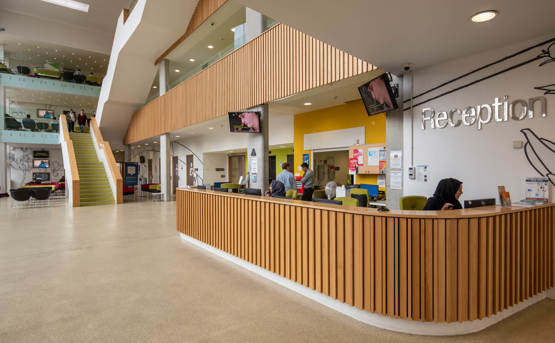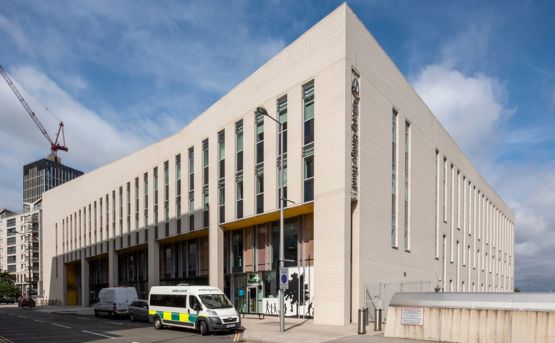
Published date: 01 March 2022
Creating a greener general practice
Meet the author
‘’A code red for humanity,’’ said UN Secretary-General António Guterres last year, following the publication of the sternest warning from climate scientists to date.
He was referring to the Intergovernmental Panel on Climate Change's (IPCC) sixth assessment report, which found that rising levels of carbon emissions and other greenhouse gases were causing "unprecedented" and "irreversible" changes to the world's climate.
Its times like these that can make the scale of the crisis seem overwhelming, especially as individuals. However, that doesn’t mean there is nothing we can do.
With the NHS being responsible for 4% of the country’s carbon emissions, GPs - who are right at the centre of every patient encounter - have the opportunity to lead the way in environmental sustainability as well as improve patient health.
A sustainable agenda for primary care
The role of primary care has always been evolving, constrained by limited resources, and growing demands on GPs as patients expect more from them in terms of accessibility and service delivery. At the same time, wider society is increasingly questioning the unsustainable relationship between our over-consumptive lifestyles and the environment. These forces are creating a new agenda for primary care - one that puts sustainability high on the list.
How we are supporting GPs in the face of climate change
With over 3000 properties in our portfolio, we are continuously looking for ways to minimise the environmental impact of our estates. Since 2019, we have taken notable steps to reduce our carbon emissions.
These steps were part of our three-year strategy - an ambitious plan with 200 actions across several key themes, including transport, recycling, waste and single-use plastic, water efficiency, and carbon emissions. The implementation of this plan has resulted in a carbon savings of more than 15% and £23m in financial savings.
Despite the progress we have made, further action is needed to achieve net zero by 2040. In the next few years, we do not only want to focus on reducing carbon emissions but also consider our ability to influence the sustainable behaviours of those who supply us and work for us, as well as sharing our learnings more widely across customers and partners.
GPs are currently our biggest customer group. This presents major opportunities to translate our ambitions into actions. Looking ahead to 2022, we will be working on various initiatives to support the primary care community in the transition to net zero, including:
- Increasing the number of smart meters to improve data quality and accuracy of billing. Once the project has been completed, we will look at ways to provide this data back to our occupiers.
- Offering guidance on biodiversity.
- Mapping the long-term risk of climate change to identify high risk sites and ensure they are fit for purpose as the climate changes.
- Developing Minimum Performance Standards and Specifications, allowing us to continue with projects such as installing LEDs, as part of reactive maintenance, planned works and bespoke energy projects.
- Moving our energy efficiency programme from being centrally-run to being regionally-led, opening more opportunities for funding.
- Undertaking a technical review to understand what the best way is to decarbonise a primary care facility. We will apply the lessons learned from the nearly completed Devizes Health Centre and review how to retrofit solutions.
- Developing a user guide based on the Green Impact from Health toolkit.
Creating the greener practice of the future
Every part of the NHS will need to act on climate change if net zero is to be achieved. For GPs, this means creating a practice that can survive the challenges ahead and continue to provide high-quality health care over the next few years and beyond. Luckily, there is a whole host of changes that primary care providers can put in place to make their services more sustainable:
1. Understanding your carbon footprint
A carbon footprint shows the total amount of greenhouse gas emissions produced by a person or entity. Understanding the carbon footprint of your practice will make it easier to identify areas for improvement. This website provides a free non-clinical carbon footprint calculator for general practices in the UK.
2. Rethinking prescribing practices
Most of the carbon footprint of GPs comes from pharmaceutical prescribing, meaning that the biggest impact can be made through clinical work. Social prescribing connects people to community support, allowing them to participate in a range of activities that are typically provided by voluntary and community sector organisations. Our Corporate Social Responsibility team is working with our asset and facilities management teams to transform vacant spaces into buzzing community hubs and green spaces.
Click here to read more about our social prescribing initiatives here.
3. Reducing waste
It is not surprising that clinical waste is a burden on the NHS and the environment. Many items are single-use or not allowed to be reused, such as unopened medication, which means they go to landfill which produces methane, a powerful greenhouse gas. Reducing waste, especially single-use plastic, should therefore always be the priority.
If this is not an option, make sure you segregate your waste in the correct bin or bag. You can find some helpful resources here.
4. Cutting your energy consumption
While we have tried hard to maintain energy prices, the market is at record highs and, for some, energy prices are set to skyrocket. Therefore, it is more important than ever to be mindful of your energy consumption. Apart from obvious energy-saving habits like turning the lights off when you leave a room, it is also important to make sustainability part of your decision-making. Examples of that could be purchasing low-energy devices and remanufacturing used medical devices.
5. Becoming part of the movement
Last, but certainly not least, get involved! Join a working group like NHS England’s Greener AHP Hub or level up your individual impact against climate change. Every contribution counts.
Building a sustainable practice is not done overnight. It takes many smaller steps, sometimes challenging ones, to change the status quo. Hopefully, this article has given you both inspiration and practical advice to make green improvements to your practice.
Questions about the blog?
If you have any questions about this blog, or would like more information about how we're driving a greener NHS, please contact our Customer Support Centre and they'll be happy to help.






